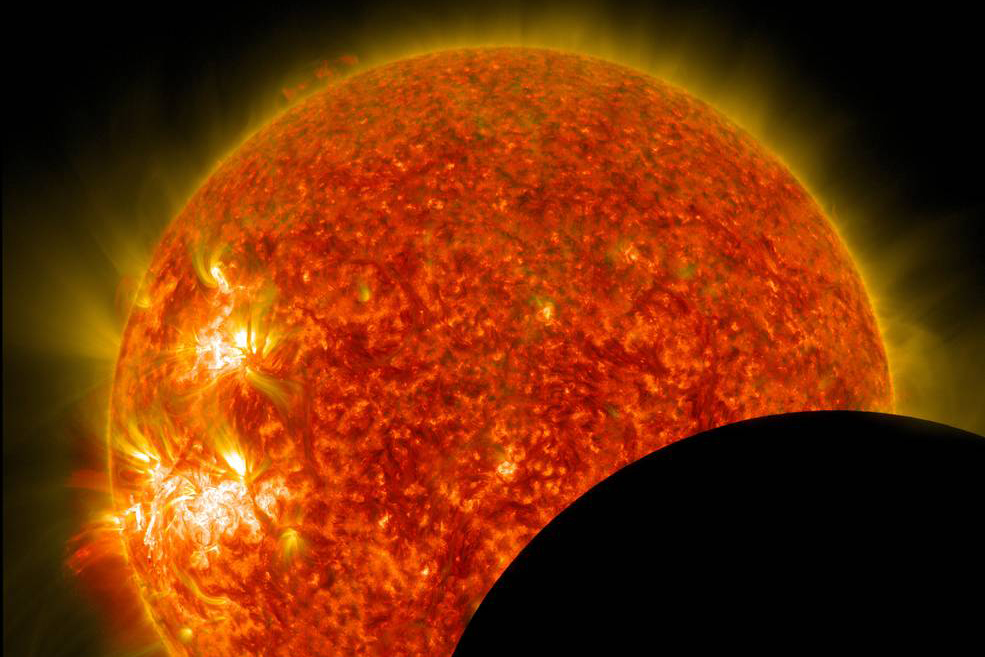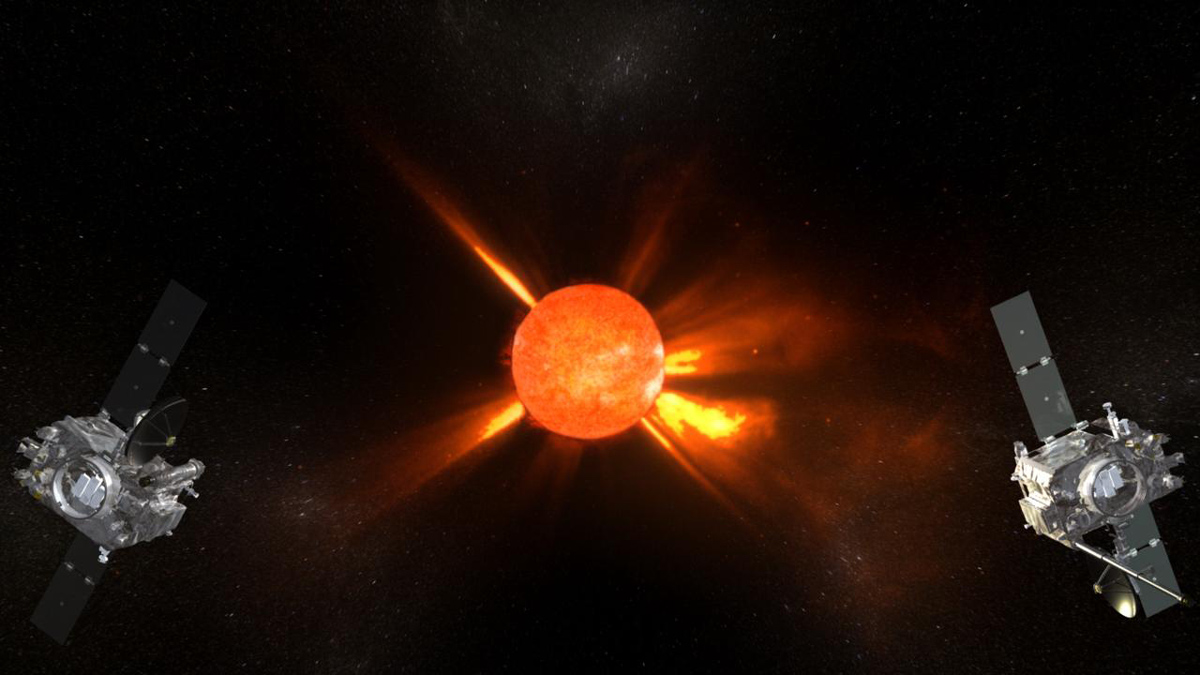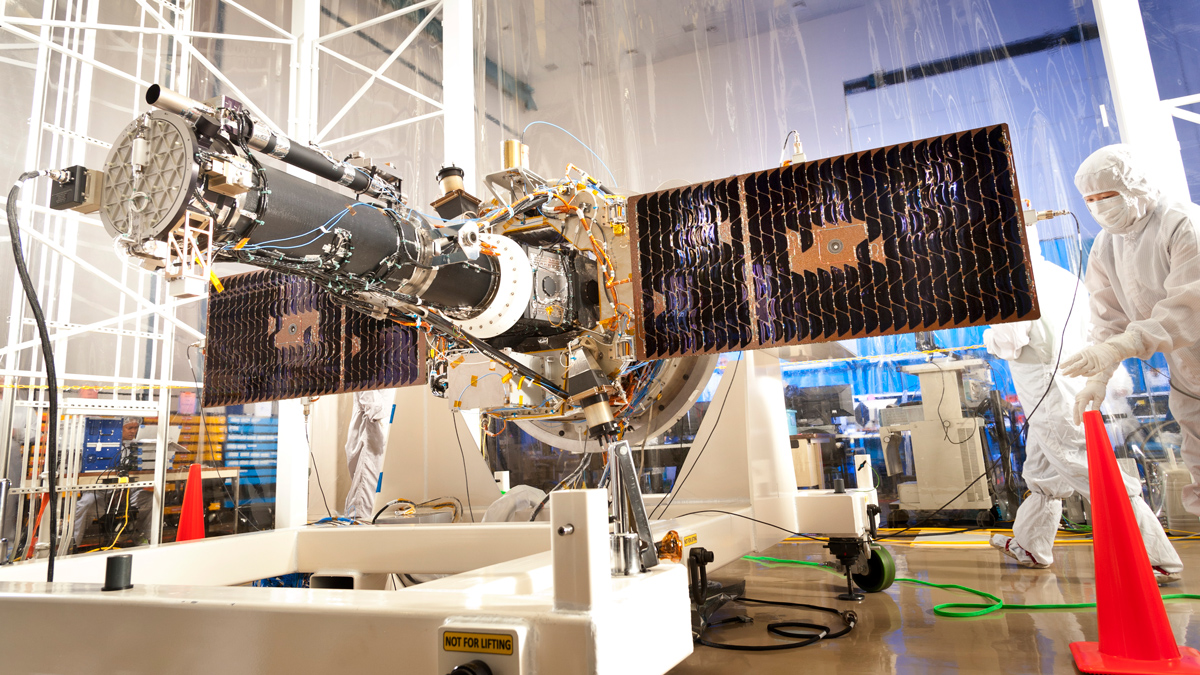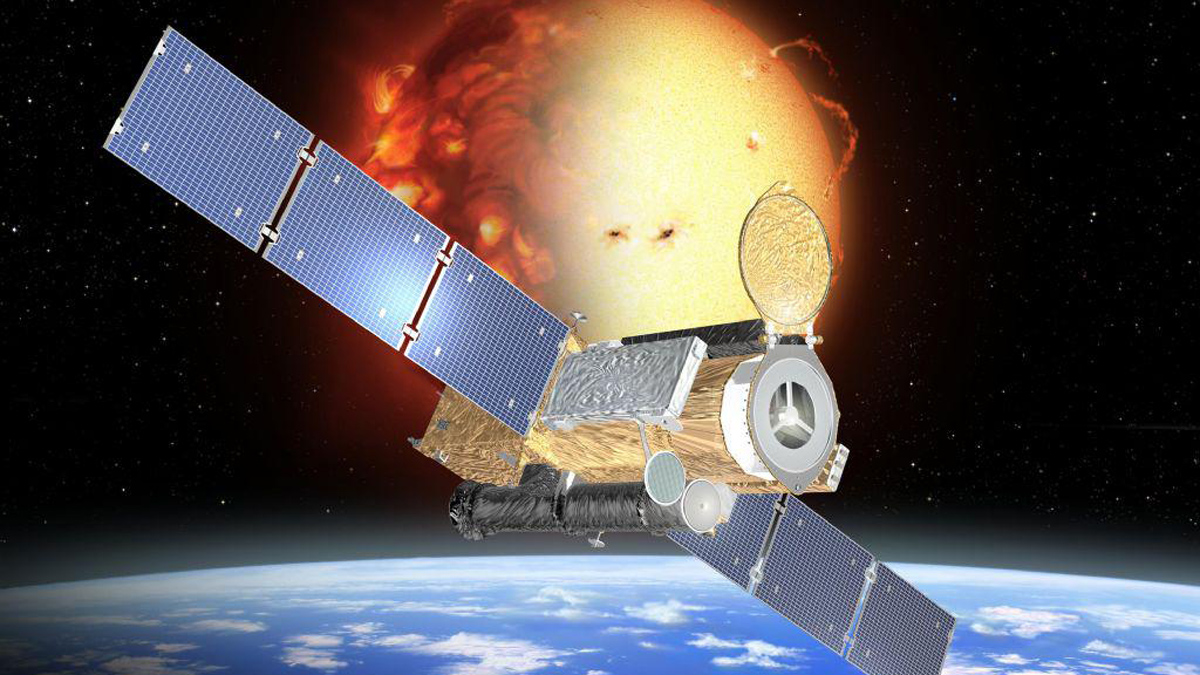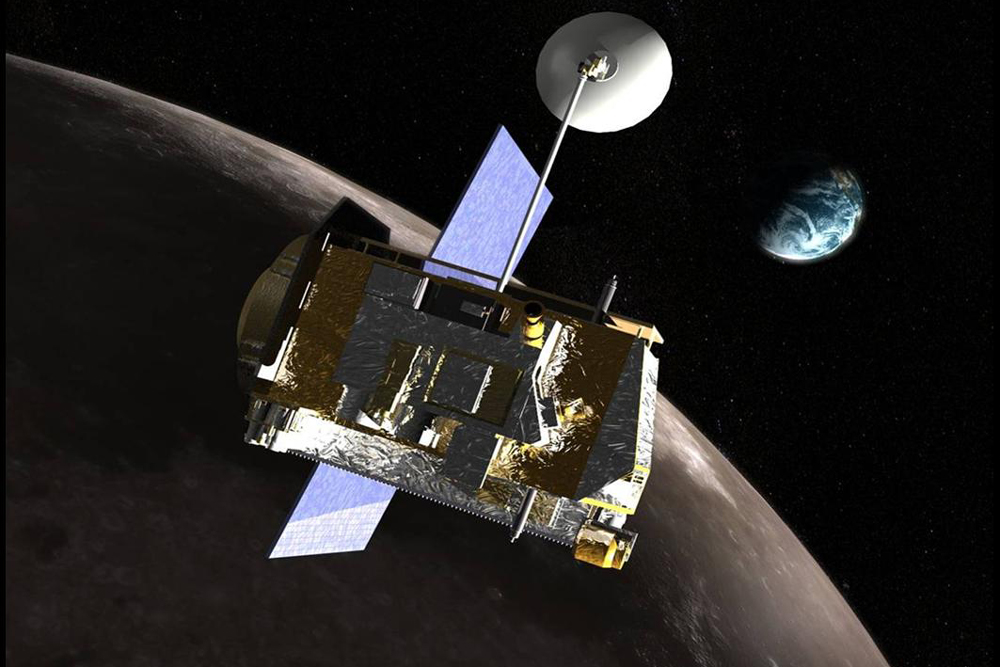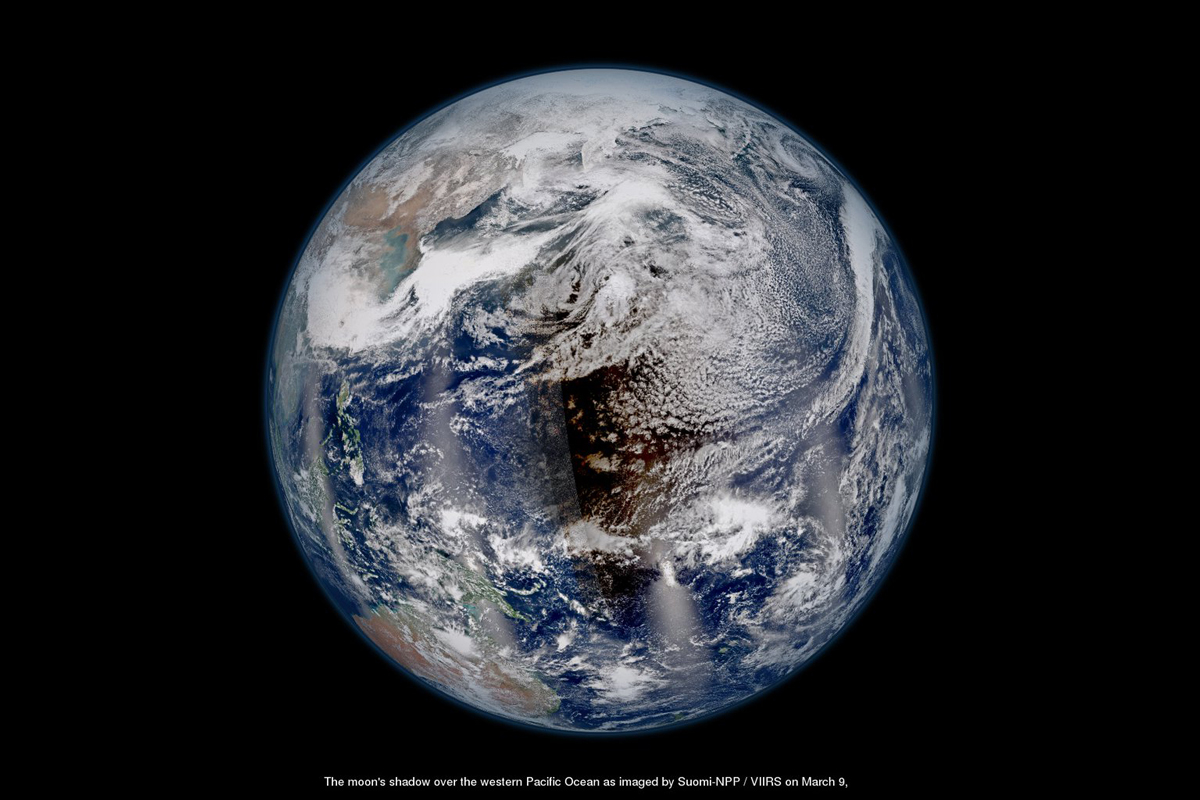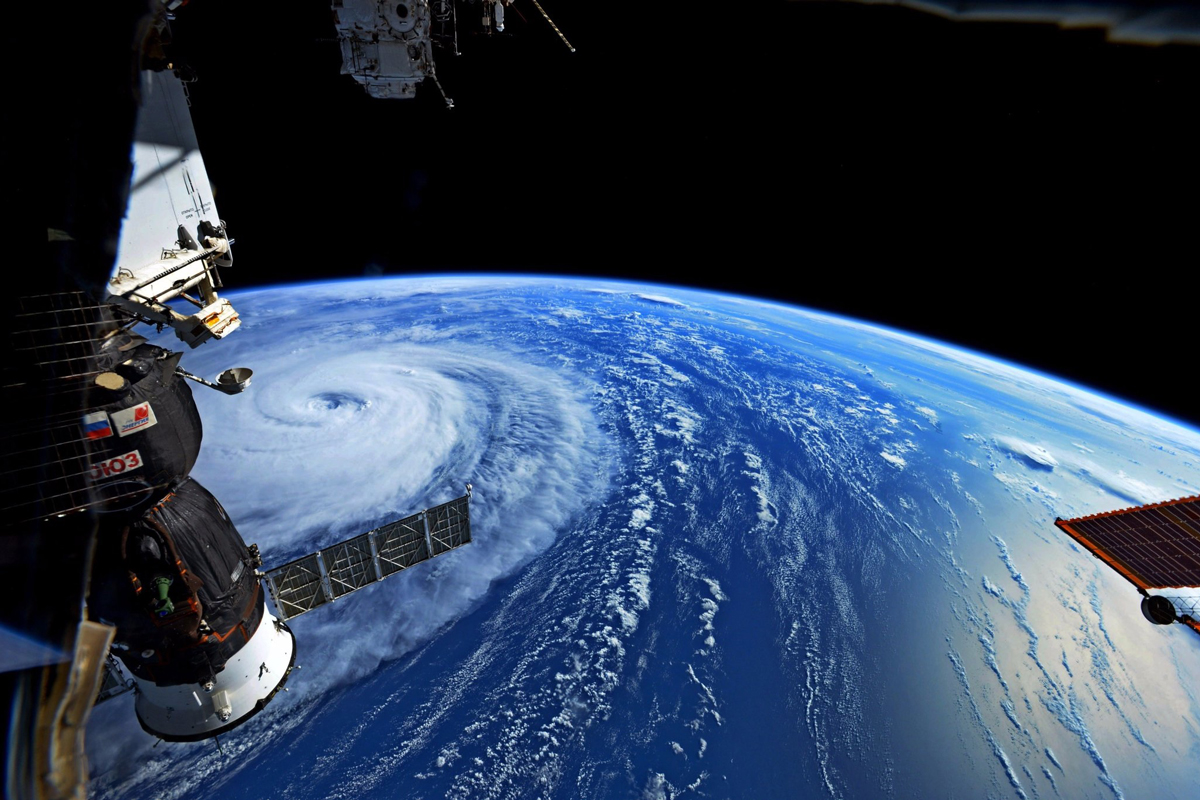These Satellites Will Watch the 2017 Total Solar Eclipse from Space
Eyes on the prize
Millions of people in the United States will turn their faces to the sky on Aug. 21 to watch the total solar eclipse as it sweeps from coast to coast. The event will also capture the attention of several spacecraft, as well as the six crewmembers currently aboard the International Space Station (ISS).
From their perches near Earth, orbiting the moon or in deep space, these spacecraft will track the behavior of the sun or how the moon's shadow passes across the Earth's surface.
Check out the planned activities of these spacecraft, as well as the ISS crew, in the following slideshow. [Total Solar Eclipse 2017: When, Where and How to See It (Safely)]
Solar Terrestrial Relations Observatory (NASA)
The Solar Terrestrial Relations Observatory (STEREO) mission launched in 2006 with two spacecraft, each in an Earth-like orbit. One of those spacecraft orbited ahead of Earth (STEREO-Ahead/Stereo-A) and the other behind (STEREO-Behind/STEREO-B). The twin observatories showed how solar storms leave the sun and move through space, enhancing space weather predictions. NASA lost contact with STEREO-B in 2014, except for a brief period in 2016. The agency still is in contact with STEREO-A.
Because STEREO-A is behind the sun (from Earth's perspective), the spacecraft won't see the moon pass in front of the sun. However, STEREO-A's coronagraph will provide views of the corona from a totally different perspective than that of Earth. "The observations STEREO gathers during the eclipse can also be used to round out observations of the solar atmosphere taken from the ground and thus create a robust, more three-dimensional picture of the sun's dynamic corona," NASA stated.
Solar Dynamics Observatory (NASA)
The Solar Dynamics Observatory (SDO) has been in space since 2010, looking at the sun 24/7. This observatory views the sun in a few different wavelengths, each of which shows material from a different layer of the sun or from its corona.
SDO is in an inclined geosynchronous orbit, which means that, from the perspective of the Earth's surface, the spacecraft is almost motionless over one spot. From that perspective, SDO will see a partial eclipse on Aug. 21 from 3:27 p.m. to 3:55 p.m. EDT (1927 to 1955 GMT).
Breaking space news, the latest updates on rocket launches, skywatching events and more!
"Scientists will be able to compare SDO imagery of the corona to images captured from the ground," NASA stated. "During a total eclipse, the lower parts of the sun's atmosphere, or corona, can be seen in a way that cannot completely be replicated by current human-made instruments. The combination of space-based and ground-based observations together create[s] a more comprehensive picture than either can do alone."
Interface Region Imaging Spectrograph (NASA)
The Interface Region Imaging Spectrograph (IRIS) spacecraft, which launched in 2013, studies how the solar atmosphere is energized. The spacecraft does this by capturing ultraviolet images of the chromosphere (the lower part of the sun's atmosphere) and the transition region between the sun's surface and its atmosphere, where temperatures jump dramatically.
IRIS is in a sun-synchronous orbit, which is a near-polar orbit. The spacecraft always passes over Earth at the same local solar time; in other words, IRIS is in constant sunlight. IRIS will see the moon pass in front of the sun several times during the solar eclipse, for about 15 minutes each pass. IRIS will calibrate its instruments during the transit, NASA officials said.
IRIS will focus especially on the lower atmosphere (the chromosphere) and loops of material projecting from the sun (prominences.) IRIS can view solar material at temperatures impossible to see from Earth's surface. It will also scan the entire limb of the sun in high resolution.
IRIS will also work in conjunction with observatories on the ground, NASA officials said.
Solar and Heliospheric Observatory (European Space Agency/NASA)
The Solar and Heliospheric Observatory (SOHO) is an extraordinarily long-running satellite, having launched in 1995. Its mission goals include looking at the sun's internal structure, outer atmosphere and the region where the solar wind originates. (The solar wind is a continuous stream of charged particles from the sun.) Such observations help scientists make predictions about solar weather. The probe orbits at L1, which is a stable gravitational location between the Earth and the sun.
From its vantage point, SOHO won't see the moon going in front of the sun, but its coronagraph allows for the viewing of artificial eclipses. The coronagraph is a disk that fully blocks the sun's disk, just like the moon does during a total solar eclipse.
"SOHO's coronagraph will be capturing observations on Aug. 21, which can be used with ground-based observations to provide deeper insight into the processes driving the sun’s atmosphere," NASA stated.
Hinode (JAXA/NASA)
Hinode is a joint mission between NASA and the Japan Aerospace Exploration Agency (JAXA), and it has been operating since 2006. Some of its science goals include learning how energy moves through the sun and how changes in energy affect interplanetary space (and the environment around Earth).
Scientists plan to use Hinode's X-ray telescope to look at the corona, or the outer atmosphere of the sun. The observations from space will be compared to observations made from the ground, according to NASA.
"One study will look at X-ray jets — explosions that erupt from the sun's surface, expelling hot gas into the corona — on the limb to determine where they occur more commonly," NASA officials said. "This research is best accomplished when we also have a view of the lower corona that can be seen only during a total solar eclipse."
Lunar Reconnaissance Orbiter (NASA)
The Lunar Reconnaissance Orbiter (LRO) launched in 2009 to provide high-resolution images of the moon's surface. Some of this orbiter's many science activities include characterizing lunar radiation, mapping the moon's mineralogy, searching for water ice and (through its images) scouting out future landing sites.
LRO has already been helpful for the eclipse, because the orbiter's high-resolution maps of the lunar surface have allowed researchers to predict with unprecedented accuracy how the moon's shadow will fall across Earth during the eclipse. Eclipse maps today can now take into account the hills and valleys of the moon when predicting where totality will fall.
The spacecraft, however, will continue providing science during the eclipse: "LRO instruments will turn around and take pictures of the moon's shadow on Earth during the eclipse. A new image-processing capability may allow the team to release the planned 2017 eclipse image in color," NASA stated.
Terra and Aqua (NASA) and Deep Space Climate Observatory (National Oceanic and Atmospheric Administration/NASA)
These three spacecraft will all watch Earth during the solar eclipse to monitor changes on the planet's surface. Here is a brief summary of the science of each:
- Terra (launched 1999): Terra looks at several systems on Earth to help scientists better understand how the climate is changing and how such changes could affect life on the planet. Areas that this spacecraft studies include atmospheric composition, climate variability, the carbon cycle, water and energy, weather, and the Earth's surface and interior.
- Aqua (launched 2002): Aqua focuses on Earth's water cycle. The things it studies include ocean evaporation, atmospheric water vapor, precipitation, ice on land and sea, snow cover, and soil moisture.
- DSCOVER (launched 2015): This spacecraft monitors the solar wind, particularly when it affects Earth. The goal of DISCOVR is to provide a warning of 15-60 minutes before a big geomagnetic storm hits; these storms happen when coronal mass ejections of charged particles leave the sun and stream toward Earth. Geomagnetic storms can affect satellites, power lines and telecommunications, among other items. DSCOVR is primarily a National Oceanic and Atmospheric Administration (NOAA) mission, but the craft also carries a NASA-provided Earth-observing camera, which will be working hard on Aug. 21.
Suomi NPP (NASA/NOAA/DoD) and GOES-16 (NOAA/NASA)
Both of these spacecraft will watch the lunar shadow on Earth's surface. These are the main science missions of each:
- Suomi NPP (launched 2011): This spacecraft's goal is to help generate better weather and climate forecasts. The features the spacecraft tracks include the ozone layer, vegetation, natural disasters, global ice cover, temperatures and air pollution. (The satellite's name is short for Suomi National Polar-orbiting Partnership.)
- GOES (Geostationary Operational Environmental Satellite)-16 (launched 2016): This is the first of a new generation of weather satellites in geostationary orbit. Its work in space includes lightning mapping (which helps with storm predictions), space-weather monitoring, and taking images of both the Earth and the sun in high resolution.
International Space Station
The ISS is a megaproject involving 15 nations, including the United States, Russia and several countries in the European Union. This station has been continuously occupied since Nov. 2, 2000, and usually has crews of from three to six people on board. The main goal of the ISS program is to prepare humans for living in deep space, by studying technologies that can be used on future space missions and by figuring out how to keep people healthy.
Because the ISS zooms around Earth once every 90 minutes, crewmembers will see the eclipse three different times on Aug. 21, Expedition 52/53 NASA astronaut Randy Bresnik told Space.com in a preflight interview in late July. The crewmembers already have special filters and cameras on board to protect their eyes during the eclipse.
"Over three different passes, we'll get to see the solar eclipse looking up from the station on the first one," Bresnik said. "The next pass, when we come over the United States, we'll actually be able to see the solar eclipse as it transits across the continental U.S. And then, on the third pass … we'll actually be able to look up and see about an 85 percent occlusion of the sun."

Elizabeth Howell (she/her), Ph.D., was a staff writer in the spaceflight channel between 2022 and 2024 specializing in Canadian space news. She was contributing writer for Space.com for 10 years from 2012 to 2024. Elizabeth's reporting includes multiple exclusives with the White House, leading world coverage about a lost-and-found space tomato on the International Space Station, witnessing five human spaceflight launches on two continents, flying parabolic, working inside a spacesuit, and participating in a simulated Mars mission. Her latest book, "Why Am I Taller?" (ECW Press, 2022) is co-written with astronaut Dave Williams.
